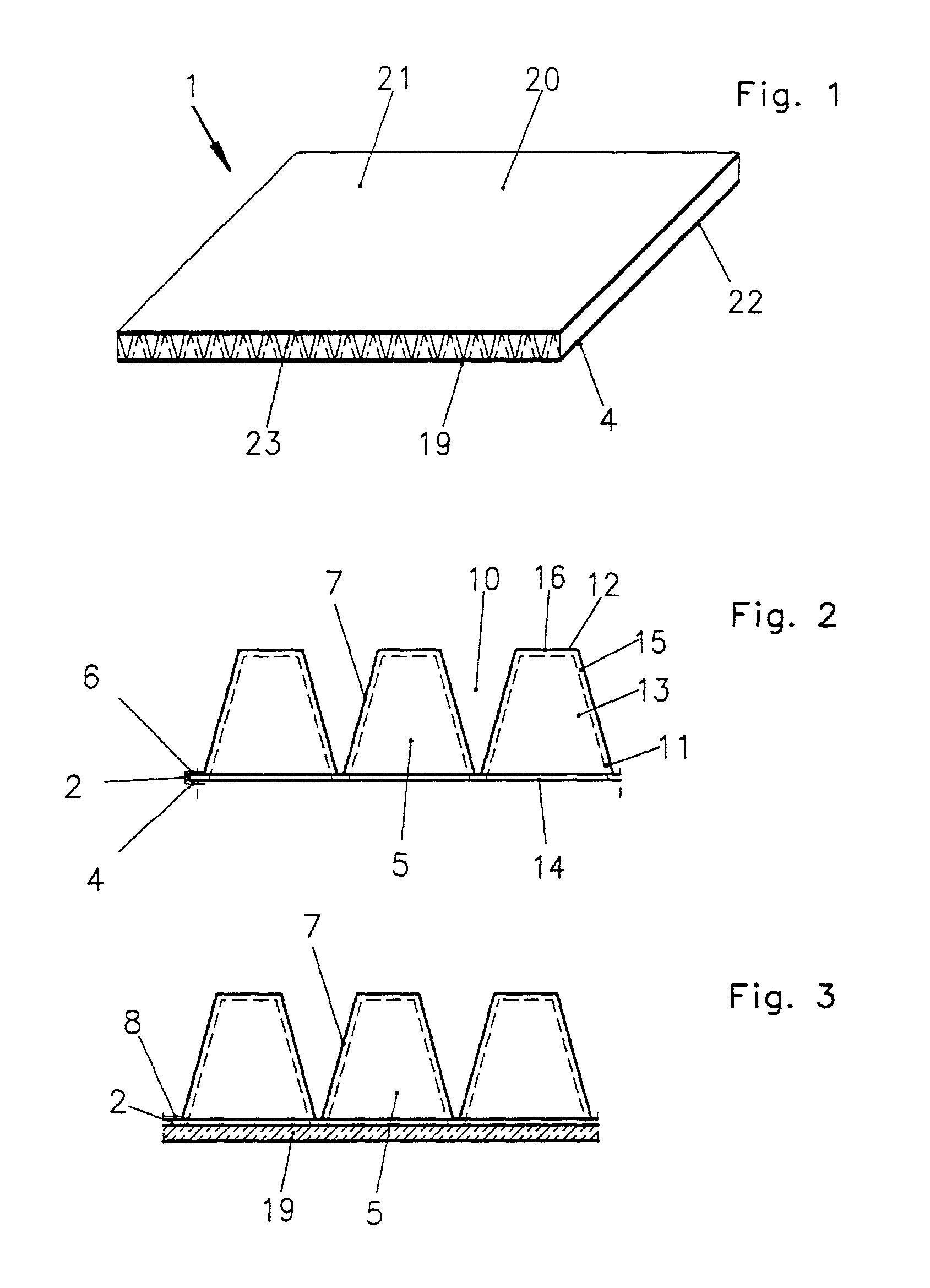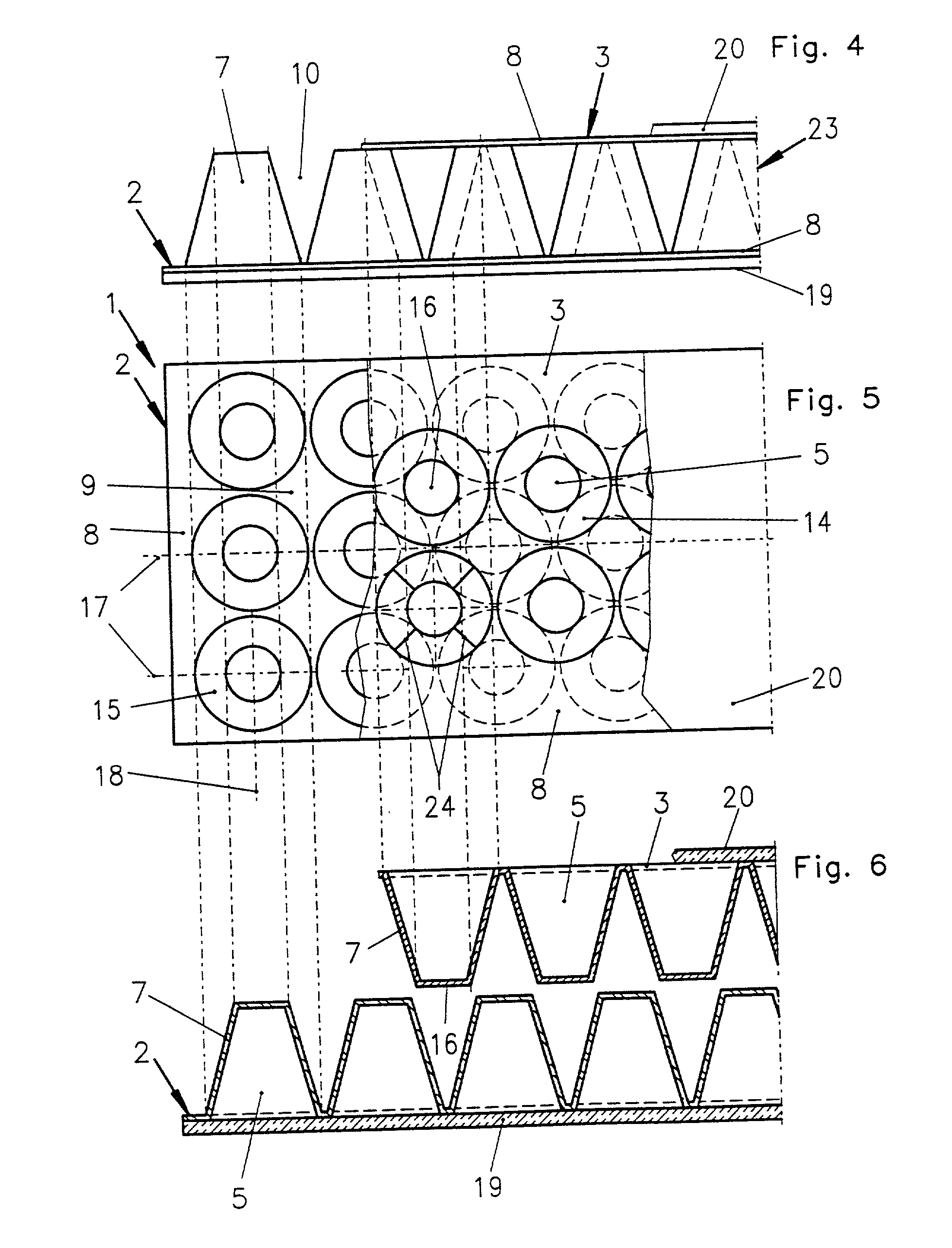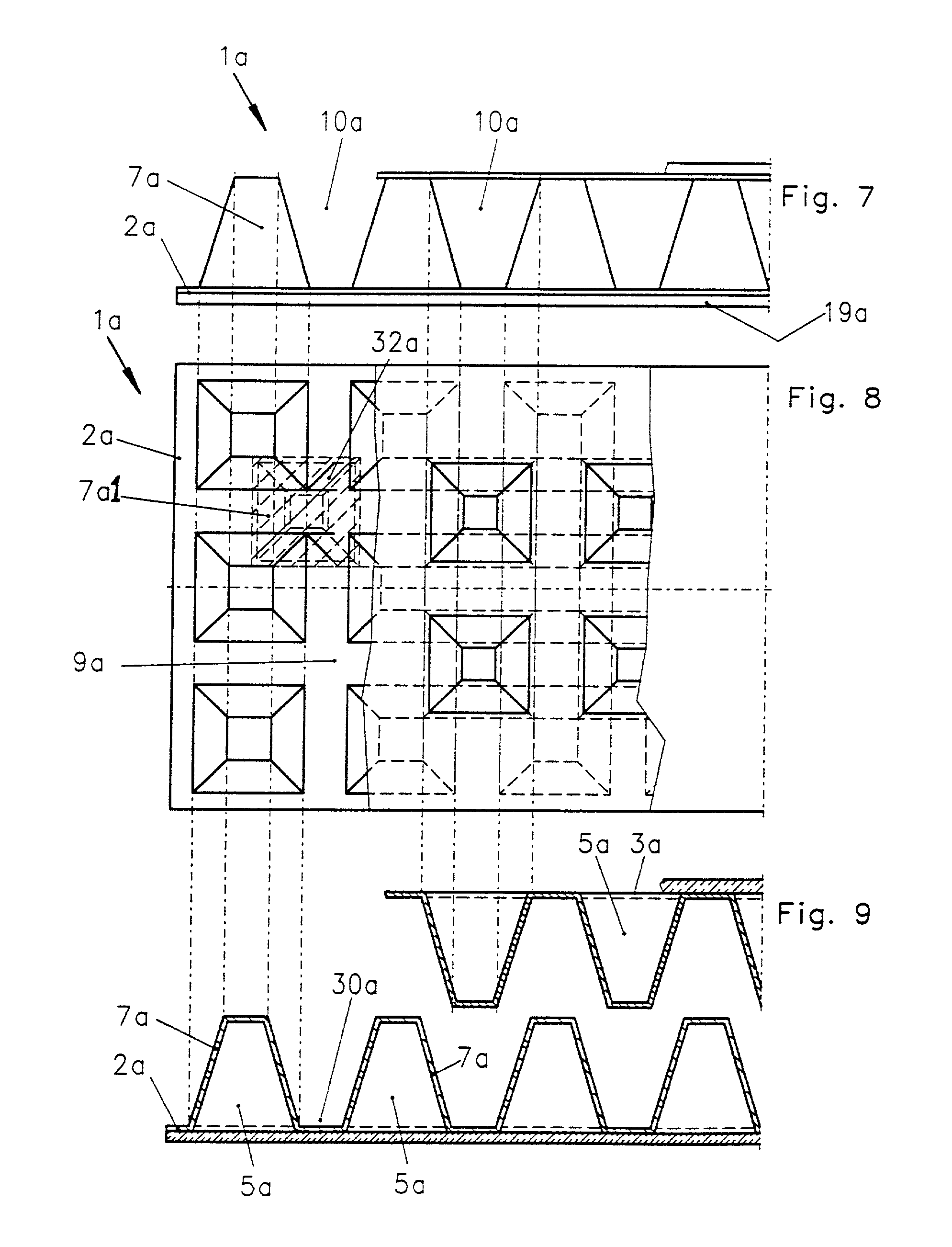Strong lightweight panel element and apparatus for manufacturing the same
- Summary
- Abstract
- Description
- Claims
- Application Information
AI Technical Summary
Benefits of technology
Problems solved by technology
Method used
Image
Examples
Embodiment Construction
[0036] A multi-layered panel element 1 according to the invention, and particularly the embodiments shown in FIGS. 1 to 6, comprises a first profiled cup member layer 2 and a second similarly profiled cup member layer 3. Preferably, these two layers 2 and 3 are each configured the same as one another. In the present example embodiment this is the case, so the details of both layers will predominantly be discussed with reference to the layer 2 as shown in FIGS. 2 and 3, whereby it is understood that the layer 3 has the same features.
[0037] The two layers 2 and 3 each comprise depressions or recesses 5 that form hollow concave bowls or cups on one side 4 of the respective layer, and corresponding protrusions 7 on the other side 6 of the respective layer, whereby these protrusions 5 form the outer or convex side of the respective cups. Along the edges or rims 8 thereof, and in areas between the depressions 5 and between the protrusions 7, the two layers 2 and 3 include flat planar area...
PUM
| Property | Measurement | Unit |
|---|---|---|
| Shape | aaaaa | aaaaa |
| Surface area | aaaaa | aaaaa |
| Thermoplasticity | aaaaa | aaaaa |
Abstract
Description
Claims
Application Information
 Login to View More
Login to View More - R&D
- Intellectual Property
- Life Sciences
- Materials
- Tech Scout
- Unparalleled Data Quality
- Higher Quality Content
- 60% Fewer Hallucinations
Browse by: Latest US Patents, China's latest patents, Technical Efficacy Thesaurus, Application Domain, Technology Topic, Popular Technical Reports.
© 2025 PatSnap. All rights reserved.Legal|Privacy policy|Modern Slavery Act Transparency Statement|Sitemap|About US| Contact US: help@patsnap.com



